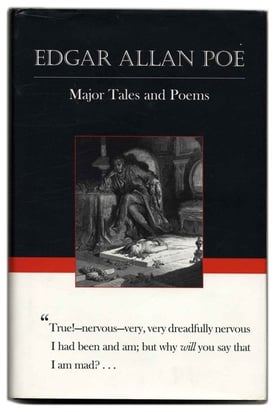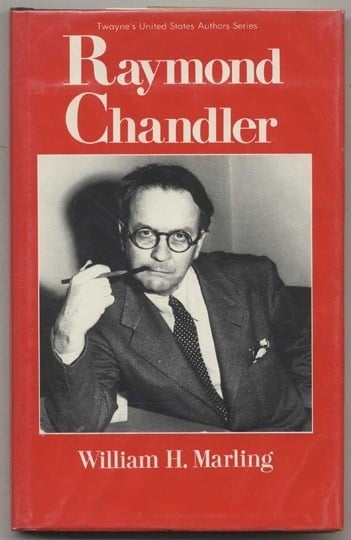American author Edgar Allan Poe is commonly associated with the horror genre. Indeed, poems like “The Raven” and “Annabelle Lee” and stories like The Telltale Heart and The Black Cat lend credence and validity to this association. However, what most don't realize is that Poe is responsible for the modern version of one of the most popular and enduring literary genres: detective fiction. Fans of mysteries and detective stories will recognize the author as the namesake of the prestigious Edgar Award for outstanding mystery novels.
 Earliest Forms
Earliest Forms
Early instances of mysteries appear in ancient literature, for example in the biblical story of Susanna being accused of promiscuity in the Old Testament, in Oedipus Rex regarding the question of Oedipus' parentage, and in an ancient Chinese genre of Gong'an fiction in which magistrates oversee court cases often involving supernatural elements.
The Makings of a Genre
A story more closely approaching the detective genre as we know it today appears in One Thousand and One Nights (commonly known as Arabian Nights). Included in this collection is the tale of “The Three Apples” narrated by Scheherazade. The story centers on a mysterious locked box that is dredged up by a fisherman from the depths of the Tigris River. Purchased and subsequently opened by Harun, an Abbasid caliph, the chest contains the dismembered body of a young woman. Harun gives his vizier three days to solve the murder or else he will execute him. The vizier does not investigate but rather is approached by the murderer with a confession. He doesn't investigate the secondary mystery of the stolen apple, either. Through sheer coincidence, he is saved from execution in the nick of time when his daughter finds the apple.
The story of “The Three Apples” contains much of what is associated with modern detective fiction, though it differs significantly in that the vizier is not approaching the mystery out of his own sense of duty or curiosity but rather to save his own life, and solves it not through deduction but by chance.
Edgar Allan Poe's Indelible Mark
 While Voltaire and E.T.A. Hoffmann wrote early detective stories, Poe's first modern detective story, the first written in the English language, was “The Murders in the Rue Morgue” which he published in 1841. In this story, he created his detective character, C. Auguste Dupin, who later appeared in "The Purloined Letter” and “The Mystery of Marie Rogêt,” Poe's take on the real life murder of Mary Cecilia Rogers who was found floating down the Hudson River in Hoboken, New Jersey. Though fictionalizing real life events was a common practice when the story was written in 1842, it was the first time a murder was written into a detective story. With the Dupin stories, Poe created an enduring formula for the genre that still exists today and is the foundation of many stories as new writers expand upon his framework, adjusting it to fit their own needs and shifting literary trends.
While Voltaire and E.T.A. Hoffmann wrote early detective stories, Poe's first modern detective story, the first written in the English language, was “The Murders in the Rue Morgue” which he published in 1841. In this story, he created his detective character, C. Auguste Dupin, who later appeared in "The Purloined Letter” and “The Mystery of Marie Rogêt,” Poe's take on the real life murder of Mary Cecilia Rogers who was found floating down the Hudson River in Hoboken, New Jersey. Though fictionalizing real life events was a common practice when the story was written in 1842, it was the first time a murder was written into a detective story. With the Dupin stories, Poe created an enduring formula for the genre that still exists today and is the foundation of many stories as new writers expand upon his framework, adjusting it to fit their own needs and shifting literary trends.
The Rest is History
Poe's stories ushered in a new period of creativity in the detective genre, with many other writers trying their hand at their own stories. Charles Dickens even included a mystery in his novel Bleak House. Then, in 1868, Wilkie Collins wrote The Moonstone. The Moonstone was the first full-length detective novel and established many elements of the genre that still exist today, such as the red herring, inside jobs, and reconstructing the scene of the crime to aid in solving the murder.
 By 1887, Sir Arthur Conan Doyle created Sherlock Holmes, arguably the most famous detective in literature. Agatha Christie followed in the 1920s with her Hercule Poirot and Miss Marple, and Raymond Chandler and Dashiell Hammond created Philip Marlowe and Sam Spade, respectively, in the 1930s. Sue Grafton began her Kinsey Millhone alphabet series in the 1980s which is still going strong today. The genre has spawned other subgenres, with police officers, forensic scientists, FBI agents and more taking on the role of detective in novels, comic books, television shows, films, and even video games.
By 1887, Sir Arthur Conan Doyle created Sherlock Holmes, arguably the most famous detective in literature. Agatha Christie followed in the 1920s with her Hercule Poirot and Miss Marple, and Raymond Chandler and Dashiell Hammond created Philip Marlowe and Sam Spade, respectively, in the 1930s. Sue Grafton began her Kinsey Millhone alphabet series in the 1980s which is still going strong today. The genre has spawned other subgenres, with police officers, forensic scientists, FBI agents and more taking on the role of detective in novels, comic books, television shows, films, and even video games.
Thanks to Edgar Allan Poe, whodunits dominate literature and television, having entertained and captured the imaginations of generations of readers trying to solve the mysteries right alongside their heroes.









